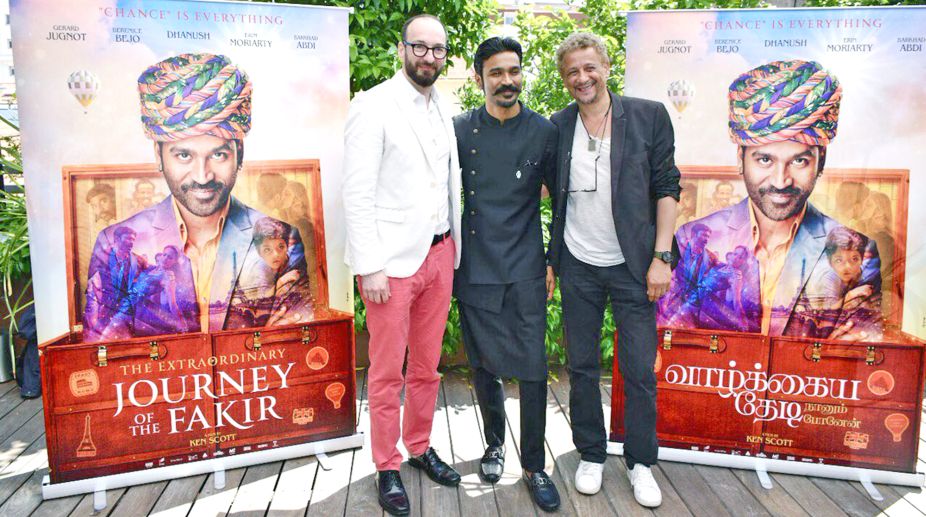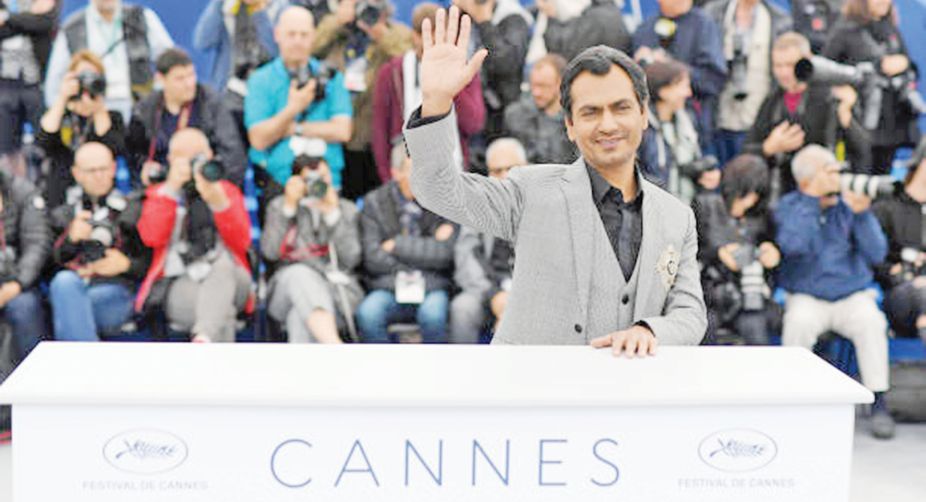Aishwarya Rai, Abhishek Bachchan celebrate 17th wedding anniversary
The Instagram post also lays to rest the divorce rumors that have been circulating on social media, a topic about which the actors have remained notably silent.

Actor Dhanush (centre) with the makers of The Extraordinary Journey of the Fakir
After a somewhat unexpected absence at the Cannes film festival in 2017, it was good to see India reclaiming its presence that goes back more than 70 years. What makes the impressive show this year more significant is the combined impact of both Bollywood and a rejuvenated regional cinema.
Quite predictably, Aishwarya Rai and Deepika Padukone remained the red carpet regulars based on their brand endorsements and sartorial excellence that could rival the performance of their Hollywood counterparts.
While that continued to provide photo opportunities, what mattered more was the participation of comparatively small films like Village Rockstars from Assam and Nagarkirtan from Bengal.
Advertisement
The first hint of the regional revival was provided at the national film awards. That it would extend to what is still regarded as the biggest global exposure of films is something that can be regarded as a big step forward.
What distinguishes the Indian presence is that a lot of it has resulted from independent initiatives. There are several fringe events while the focus is on the Indian Pavilion mounted generally by the National Film Development Corporation with the official delegation consisting of a hand-picked group of directors and officials.
This year the regional films that also included the Malayalam film, Bhayanakam, were part of the government’s effort to take different shades of Indian reality to the West. If the basic idea was to explore potential markets, it is clear that the effort cannot be confined to a film festival even if the event is as big as Cannes.

This is a festival that generates more enthusiasm than similar events where Indian films seek a presence. It is largely because of the possibilities of a delightful holiday in the French Riviera that no one wants to miss, especially if it is supported by the government or a production house. By all accounts, the main business of marketing over the years may not have matched the excitement of a summer holiday on the Mediterranean coast.
The excuse has often been the need to identify entries for one of the Indian festivals later in the year. That may or may not have yielded the desired results but the opportunity to mingle with the glamorous crowd in the tempting environment of the festival has seldom been missed.
For example, there seemed little reason to choose Cannes to launch the poster of a film based on the story of Ismat Chugai. But what did seem quite extraordinary was the participation of films on the sidelines of the festival, which reflected the diversity of ideas by independent directors though many of them were clearly outside the mainstream.
Nandita Das’s film on the life and times of Manto was perhaps an exception. She has been on the jury at Cannes along with Sharmila Tagore and Aishwarya Rai in different years and may have been keen to present her work with Nawazuddin Siddiqui, who plays the protagonist, before the film is released back home.
But consider films like Kia and the Cosmos by Sudipto Roy or The Tashkent Files by Vivek Agnihotri with Naseeruddin Shah and Mithun Chakraborty that seeks to reopen what is presented as a mystery surrounding the death of Lal Bahadur Shastri or The Extraordinary Journey of a Fakir, an English-French comedy based on a European novel.
These reflect the creative diversity of the new generation much like the earlier impressions left by Anurag Kashyap in Gangs of Wasseypur and Neeraj Ghaywan in Masaan. But there remains the question of whether some of these filmmakers target festivals more than theatres.
India, of course, has had its great moments ranging from the inclusion of The Lunch Box in the Critics Week after the impression it had left at the Oscars followed by the critical appreciation in India to the stunning presence of Amitabh Bachchan at the inauguration in the year The Great Gatsby was shown.
But none of this could match the golden years of the 1950s and later when India ran into a string of handsome rewards. It had begun with the Grand Prix for Chetan Anand’s Neecha Nagar, which the director had shared with David Lean’s Brief Encounters in 1946.
The high point was achieved with the Palm d’Or (the new name for the Grand Prix) for Pather Panchali, which had turned out to be a true eye-opener for the West as far as the India was concerned along with the cinematic insights that were devoured by film students round the globe.
But Cannes will also be remembered for recognising a variety of Indian films —among them, Raj Kapoor’s Boot Polish in 1955, Mrinal Sen’s Kharij in 1983, Mira Nair’s Salaam Bombay in 1988 and Shaji Karun’s Piravi in 1989.
All this constitutes a long history of cinematic excellence that need not be diluted by a concentration on fringe events like the announcement of a co-production of a biopic or the fashion statements made by stars, who have had little to show by way of creative achievements. It makes great news when talented young directors make the best use of a global platform to showcase their work.
One would still look forward to an adventure at Cannes that will confirm the success with which the social and artistic elements along with the extraordinary technical achievements made in India can compete at the international level.
Advertisement